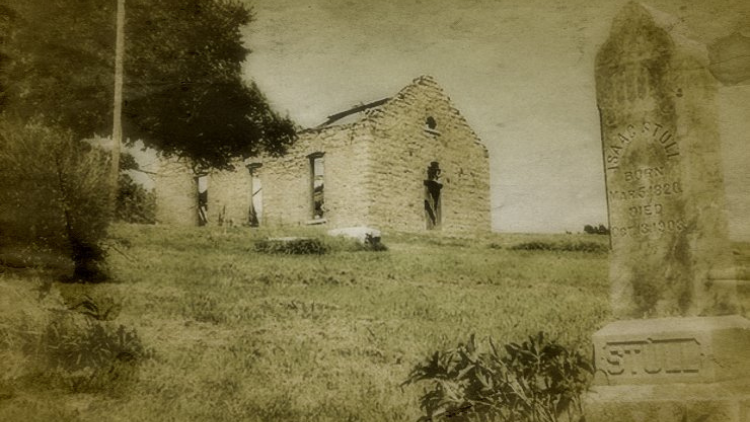Tucked away off a quiet country road near the nearly-vanished town of Stull, Kansas, lies one of America’s most infamous cemeteries. Depending on who you ask, Stull Cemetery is either an overgrown rural graveyard… or one of the seven literal Gateways to Hell.
This isn’t a sideshow attraction or some spooky Halloween decor. Stull is desolate, unsettling, and watched closely. The legend has only grown darker with time.
Location
- Coordinates: 38.9714° N, 95.4545° W
- Address: Just off E 250 Road, Douglas County, Kansas
- Nearest Towns: Lawrence (12 miles), Topeka (18 miles), Baldwin City (9 miles)
- Access: There is no signage. It’s barely marked, and trespassing is strictly enforced, especially after dark. Patrols are common.
Origins of the Legend
The legend begins in the 1800s, when the area was known as Deer Creek. A local church was built beside the graveyard—eventually collapsing, leaving only fragments of stone. According to lore, it wasn’t just a church. It was a ritual site where Satan himself appeared twice a year: on Halloween and the spring equinox.
By the 1970s, local college students were sneaking into the cemetery to test the myths. The now-destroyed staircase behind the church ruins was said to lead straight to Hell—literally descending underground but returning hours later in a different place or time.
Over time, Stull became synonymous with occult activity: rituals, dead animals, black masses, and unexplained disappearances all entered the mix.
The Pope Wouldn’t Fly Over It?
A popular claim that gave Stull international attention is this: when Pope John Paul II flew into Colorado in the 1990s, he specifically asked the pilot to reroute the flight to avoid passing over the “unholy ground” of Stull. There’s no official record—but the story stuck, and it didn’t help Stull’s reputation.
The Church That Disappeared
For decades, the stone shell of the abandoned church stood at the cemetery’s edge—crumbling and graffiti-covered. Then, sometime in the early 2000s, it was quietly demolished without public announcement. Many believe it was destroyed to stop the nightly trespassers who believed it to be a portal.
Still, strange occurrences continued: odd weather patterns, electrical interference, strange sounds, and eyewitness reports of robed figures moving through the cemetery late at night.
Real Deaths, Real History
Behind the urban legends, the cemetery holds real, tragic history. Many of the graves date back to the 1850s and 60s, including children and early settlers. The town of Stull itself once had a post office, school, and several homes—but nearly all of it has disappeared. Today, only a few structures remain.
Is It Worth Visiting?
Yes—but with caution and respect.
- DO NOT visit at night.
- DO NOT cross the fence or locked gate after hours.
- DO NOT bring a group.
- Police and neighbors actively monitor the grounds due to past vandalism and trespassing.
- The cemetery is technically still in use, with occasional modern burials.
Go during daylight, take in the stillness, and walk lightly. If you’re lucky—or unlucky—you may leave with a photo that makes no sense or a feeling that something followed you back to the car.
Why It Still Matters
In a world full of fabricated haunts, Stull remains eerily authentic. Its quiet isolation, real gravestones, and decades of strange happenings have etched it into America’s darker folklore.
Unlike a haunted house or ghost tour, Stull doesn’t want your attention. That’s what makes it scarier.



